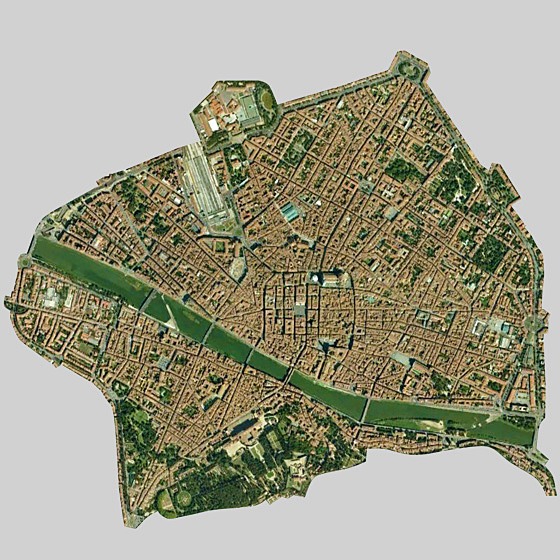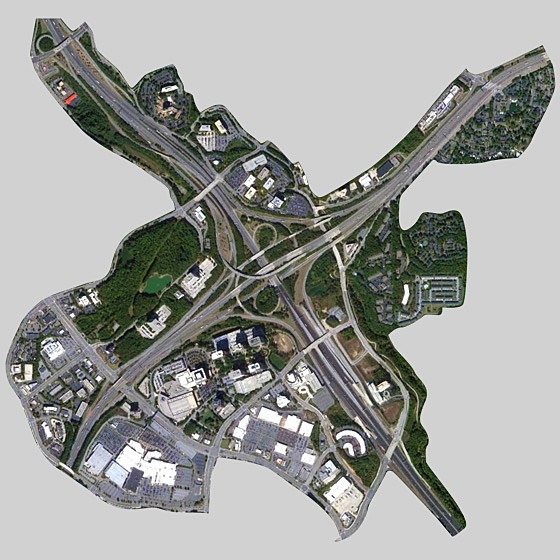It's a pretty striking contrast, isn't it? On the left, Florence, Italy, birthplace of the Renaissance. On the right, Atlanta, Georgia, home of the 23-lane freeway.
This was the central illustration in an illuminating discussion of how roads designed for high-speed car travel devour our landscapes and devastate their value. Steve Mouzon, principal at Miami's Mouzon Design and author of The Original Green blog, argues in Better Cities and Towns that our fondness for wide, high-speed roads simply takes up too much space.
He compares Seaside, Florida, a community with a more traditional street pattern, with the landscape surrounding an interchange in Miami. In the former, 80.5 percent of the land is available for development; in the latter only 62 percent -- an astonishing 34 percent of the land is consumed by roads.
Fast, highway-like roads hog land in four primary ways, Mouzon explains:
Curves -- Increasing speed a little bit requires a big increase in the size of curves. At 20 miles per hour, any car can handle a curve with a 15-foot radius, so you'd think that tripling the speed would triple the radius, right? Wrong. At 60 miles per hour, curve radii are usually a few hundred feet, not the 45 feet you might guess.
Lane width -- Faster roads need wider lanes. An eight-foot lane can handle 20 mile per hour traffic, but at highway speeds, you need 12 foot lanes [to give fast-moving drivers a wider berth].
Medians and shoulders -- High-speed roads need wide medians and shoulders because a car can roll hundreds of feet beyond the point of collision or loss of control when it is traveling at highway speeds.
Number of lanes -- It makes no sense to use all that land on either side for a two-lane highway, so high-speed thoroughfares usually have at least four lanes, often several more.
Equally pernicious are high-speed roads' influence on culture, Mouzon says, noting that "the entire Duomo (the cathedral in the center of Florence that arguably began the Renaissance) could fit in one of the inner loops of the interchange." It seems safe to assume that America's next great artistic movement will have nothing to do with the Atlanta interchange.
Apparently oblivious to the costly side effects of the highway-ification of local roads, AASHTO last week issued a report recommending wide, straight roads as the best way to promote safety for older motorists. Ugh.







